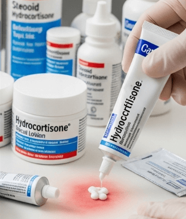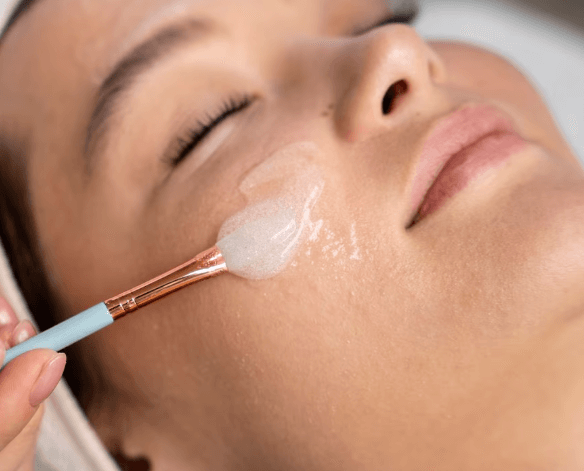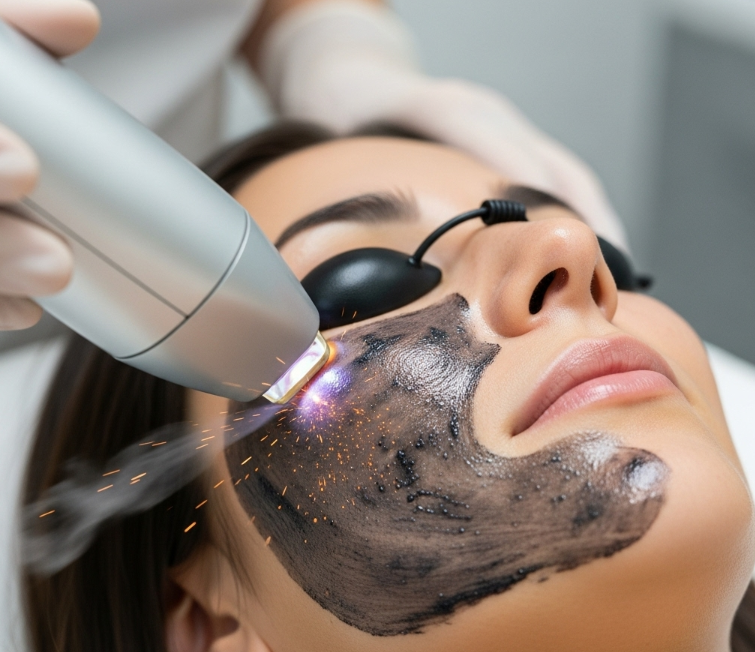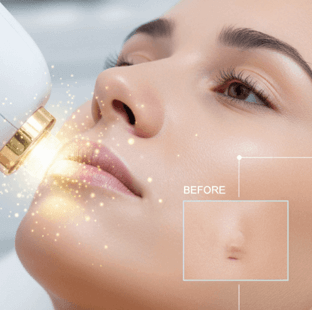Treatment Overview
Steroid topical creams are sometimes prescribed in Korea for acute redness, inflammation, and flushing caused by rosacea flare-ups, eczema, or post-procedure irritation. These medications work by suppressing local inflammation and calming vascular overactivity, leading to rapid relief of redness and itching.
However, in Korean dermatology, steroid topicals are used very cautiously and only for short periods, because long-term or inappropriate use can worsen redness (steroid-induced rosacea) or cause thinning of the skin. For this reason, dermatologists in Korea often combine steroids with non-steroid alternatives (like calcineurin inhibitors, soothing creams, and herbal infusions) and reserve them for severe cases where other treatments are insufficient.
For redness and flushing, Steroid Topical Therapy:
- Provides rapid calming of acute flare-ups.
- Reduces itching, swelling, and visible redness.
- Serves as short-term rescue therapy rather than maintenance.
Purpose & Benefits
- Fast Relief: Quickly reduces redness and vascular inflammation.
- Flare-Up Control: Used for sudden rosacea or dermatitis episodes.
- Anti-Inflammatory Action: Suppresses cytokine-driven skin irritation.
- Combination Use: Often followed by non-steroid creams to maintain results.
- Post-Treatment Rescue: Occasionally applied after harsh procedures if severe inflammation occurs.
Ideal Candidates
Steroid Topical Therapy in Korea is recommended for:
- Patients with severe rosacea flare-ups with intense redness.
- Individuals with eczema-related redness or sensitivity.
- Adults experiencing short-term inflammatory flushing unresponsive to soothing care.
- Patients recovering from procedures with excessive irritation.
- Those under close dermatologist supervision for controlled use.
Comparison with Other Treatments
- Steroid Topicals: Strong, rapid redness relief; not suitable for long-term daily use.
- Erythema-Reducing Creams (Brimonidine, Metronidazole, Ivermectin): Safer for chronic redness management.
- Anti-Redness Lasers (V-Beam, PDL, Nd:YAG): Target vascular networks; long-term results.
- Antibiotics (Doxycycline, Minocycline): Internal inflammation control; slower but safer long-term.
- Beta-Blockers (Propranolol, Carvedilol): Control adrenaline-driven flushing; systemic option.
- Herbal Soothing Therapy: Gentle, natural anti-inflammatory alternative.
- Moisture Therapy: Strengthens barrier, reducing need for steroids.
Possible Risks & Complications
Because of their potency, steroid topicals carry higher risks if misused:
- Skin thinning (atrophy).
- Steroid-induced rosacea or rebound redness.
- Visible capillaries (telangiectasia) with long-term use.
- Perioral dermatitis around the mouth.
- Dependence if used continuously without breaks.
Treatment Techniques Used
- Short-Course Therapy: Applied for a few days to 1–2 weeks during flare-ups.
- Low-to-Medium Potency Steroids: Preferred for facial redness (e.g., hydrocortisone, desonide).
- Spot Application: Applied to inflamed areas, not full face.
- Combination Approach: Transitioned to non-steroid redness creams after flare-up subsides.
- Clinic Integration: Paired with cooling masks, herbal packs, or infusions to reduce reliance on steroids.
Recovery & Aftercare
- Immediately: Redness and irritation improve within hours to days.
- 1–2 Weeks: Flare-up subsides; therapy discontinued.
- Maintenance: Non-steroid alternatives (erythema-reducing creams, barrier repair products) prevent relapses.
Aftercare Tips:
- Do not use without dermatologist approval.
- Apply a thin layer only to affected areas.
- Never use strong steroids on the face without supervision.
- Transition to soothing or barrier creams once redness stabilizes.
Results & Longevity
- Short-Term (1–3 Days): Rapid redness reduction, calmer skin.
- Medium-Term (1–2 Weeks): Flare-up fully controlled.
- Long-Term: Not recommended for continuous use; risk of rebound redness.
Treatment Process in Korea
- Consultation & Diagnosis – Dermatologist assesses redness cause (rosacea flare, eczema, post-procedure).
- Prescription – Low-dose steroid cream provided for short use.
- Usage Instruction – Strictly limited duration and application guidance given.
- Clinic Add-Ons – Cooling masks, herbal soothing, or moisture therapy added to reduce steroid need.
- Follow-Up – Transition plan to non-steroid redness management creams.
Why Korea is a Top Destination
- Korean dermatologists are very cautious with steroid use, minimizing risks.
- Integration of herbal soothing and moisture therapy reduces steroid dependence.
- Affordable consultations and prescription access.
- Focus on safe, short-term rescue protocols for redness emergencies.
- Korea’s dermatology is globally respected for its balanced, multi-step approach.
Cost Range (Detailed Breakdown)
Pricing for Steroid Topical Therapy in Korea for redness & flushing:
- Consultation Fee: USD 20 – 40.
- Prescription Steroid Cream (Low Potency, 1–2 Weeks Supply): USD 10 – 30.
- Clinic Add-Ons (Cooling masks, herbal infusions, LED therapy): USD 50 – 120.
- Premium Redness Rescue Program (Steroid + Soothing Infusions + Laser Transition Care): USD 300 – 800.
Additional Costs in Korea:
- Non-steroid calming creams (Centella, panthenol, propolis): USD 30 – 80.
- Sunscreens for redness-prone skin: USD 20 – 50.
💡 Patients often call steroid topicals the “emergency calm cream”, since they quickly stop flare-ups but must be used responsibly.
Popular Clinics in Seoul
- Oracle Dermatology – Short-course steroid rescue + laser aftercare plans.
- Banobagi Dermatology – Steroid creams integrated with herbal calming therapy.
- Renewme Skin Clinic – Emergency flare-up protocols with transition to non-steroid creams.
- View Plastic & Dermatology – Redness management programs combining steroids + vascular lasers.
- Chaum Anti-Aging Center – Premium redness rescue with steroids, regenerative infusions, and barrier support.




